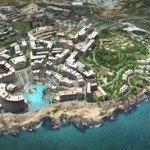 The 2012 National Football League season is in full swing. And, each week flocks of fans head to stadiums around the country to cheer (or boo) for the home team–about 80,000 people per stadium.
The 2012 National Football League season is in full swing. And, each week flocks of fans head to stadiums around the country to cheer (or boo) for the home team–about 80,000 people per stadium.
The unique challenge of stadiums, which are practically cities unto themselves, is the management of intensely complex infrastructures that provide food, water, medical facilities, climate, and even traffic control. All this may require pinpointing exact locations or managing operations across tens, hundreds, or even thousands of miles.
“By using information in new and creative ways, organizations can better manage these sprawling environments.”
What’s becoming increasingly prevalent in the creation of these “mini-cities” is requiring innovative technology to make them a microcosm of a smarter city where information is used to deliver services effectively and efficiently. By using information in new and creative ways, organizations can better manage these sprawling environments, and teach us lessons about how to make our cities smarter.
PEOPLE ARE SENSORS
Let’s put these organizations with massively complex facilities in context. Look at the top 25 most populated cities in the United States, and you’ll see Boston, Seattle and Nashville on the list. Yet, all of these cities are less populated and occupy fewer square miles of land than the Los Angeles Unified School District
With 14,000 buildings that cover more than 710 square miles for its 700,000 students, the district is so vast, it mimics an actual city’s infrastructure considering their use of natural resources and the complexity of operations. To help manage this vast school system, the L.A. schools are empowering its “citizens”–the thousands of students, teachers and staff–to act as living sensors to identify faulty or dangerous infrastructure, such as broken windows, doors or railings, and then sending these images or text messages from their smartphones.
The innovative part is that the information is automatically fed into the district’s maintenance system, then analyzed and prioritized so repair orders can be issued.
Historically, the school district spent a lot of time and money locating and reporting maintenance issues. Now, with the power of crowdsourcing through mobile technology, they have a more efficient way to report and locate repairs, and respond faster to service more than 800 campuses.
By putting this technology at the fingertips of most everyone on campus–the people that depend on the safety of the campus, school district employees and even students–are provided a greater sense of community. The people who reside in these buildings every day can better gauge the urgency, severity and degree of a problem and provide that intelligence when reporting.
COMPLEX FACILITIES ARE SYSTEMS OF SYSTEMS
Technology is being used in ways you would never expect to help solve fundamental problems, from managing a football stadium on game day, to helping manage transportation systems and emergency operations.
Even more expansive than a school district or stadium, the U.S. General Services Administration (GSA)–responsible for federal government buildings–uses technology to enforce Presidential mandates to maximize energy efficiency and automate the management of its highest-energy consuming buildings.
GSA owns nearly 182 million square feet of office space nationwide and is expected to reduce energy consumption in federal buildings by 30% by 2015. This reduction will not only improve efficiency, but will also save up to $15 million in taxpayer dollars annually.
Like with the Los Angeles school district, the GSA works on highly complex facilities comprised of systems within systems. Within these systems, all pieces must fit together to make them work in conjunction, including water, energy, transportation, safety and more.
CONNECTING THE PHYSICAL AND DIGITAL WORLDS
As organizations and large facilities like stadiums, museums, schools and government buildings continue to grow and provide more people with faster, better, innovative services, we need to make them more efficient–not by cutting back services, but by getting insight and intelligence on how our physical world functions.
From roads to vehicles to buildings to HVAC systems and lights, there are thousands of objects that not only need to be managed, but the way in which they interact and affect each other must be optimized.
By answering questions such as: “What pipes break down the most?” “How can we ensure our facility is functional in high season? “Which rooms get the most foot traffic and need greater maintenance?” we can get real insight to drive better decision making and efficiency.
If we analyze this data, we can find inefficiencies or make connections we never would have imagined. For example, the fact that 30 percent of San Francisco traffic can be attributed to drivers cruising for parking. By connecting the physical and digital worlds, these massive organizations that are part of our daily lives can deliver more efficient services to us all. It’s a good lesson for the future.
http://www.fastcoexist.com/1681022/making-smarter-cities-by-making-smarter-systems?goback=%2Egde_3177681_member_195597414
Speak Your Mind
You must be logged in to post a comment.